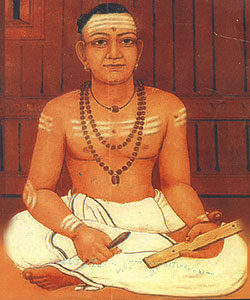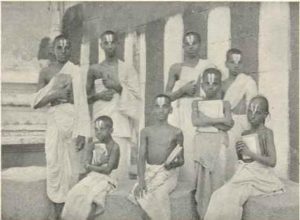
“Guru Govind Dou khade, kakelagupaye, balihaari guru aapnegovinddiyobataaye” This shloka perfectly describes the stature of a teacher in Indian culture. From a long time, we have emphasized on the role of teachers in our society. But have you ever thought about the history behind it? Let’s find out.
The Indian tradition lays a lot of emphasis on venerating the preceptor or the Guru. Though teachers are held in high regard in cultures across the world, nowhere does one get to see the stature of the teacher being equated (or even being considered superior) to God himself.
In the Skanda Purana, the glory of the Guru is sung in 400 verses, known as the ‘Guru Gita’. Veda Vyasa- traditionally believed to be the compiler of all Vedic and Puranic texts composed these verses in the form of a dialogue between Goddess Parvati and Lord Shiva. Shiva assumes the role of a Guru and engages in a conversation with his ‘student’- Parvati. Tulsidas’s Ramacharitamanasa also features a similar conversation, wherein Shiva narrates the story of Rama to Parvati.
In the Guru Gita, Shiva expounds the meaning of the word ‘Guru’. The syllable ‘Gu’ in Guru is indicative of darkness, while ‘Ru’ indicates its removal. Thus, the Guru is an individual who negates darkness from one’s life and fills it with the brilliance of knowledge. This definition may come as something very elementary upon first observation, emphasising an ability which every teacher possesses- that of granting knowledge. However, if analysed carefully and seen in the context of other conceptualisations in the Indian philosophical tradition, it holds immense significance.

The concept of rebirth is central to Indian philosophical thought. A general conception in the Upanishadic and Buddhist perspectives on existence, is that an individual soul/consciousness continues to take birth in different forms, until it realises its true nature. Among the different births which an individual takes, that as a human being is considered to be most exalted. This is because the markedly developed mental capacity of humans, makes them more conducive for exploring the higher metaphysical truths of existence. Quite unlike this, animals can utilise their mental capabilities merely for procuring food, identifying a potential mate and at the most, guarding their territory. A human birth is usually deemed to be an absolute waste, if efforts are not channelized towards self-unfoldment and the attainment of realisation.
The role of one individual in facilitating this process of self-unfoldment is extremely crucial: The Guru. In the days of yore, it was a common practice for students to take up a vow of Brahmacharya when they went to Gurukulas for
receiving education. The purpose behind this was to detach them from mundane regularities of worldly existence and enable them to channelize their efforts towards intellectual growth. All the activities in the Gurukula took place under the Guru’s watchful eyes, who ensured that nothing hinders the process of the all-round development of students.

Seen in this context, one realises that the role of the teacher is not solely imparting education. Rather, being a Guru brings with itself the responsibility to enable the student in such a manner, that she/he is able to look beyond the conventional and stereotypical. The fact that an individual is capable of making others realise out their true potential and conceive of capabilities lying beyond their conception, makes her/him worthy of respect. The mother is thus, deemed as the first Guru when she nurtures a child in such a way, that it doesn’t feel uncomfortable on being taken out from the protected confines of the womb. It is not the physical act of teaching that defines a teacher. Rather it is the motivation to reach out, the will to improve lives and the quest to enable others on the path towards overall growth, which gives shape to a teacher in the truest sense.
Author: Piyush Kukrety


Vry nice article